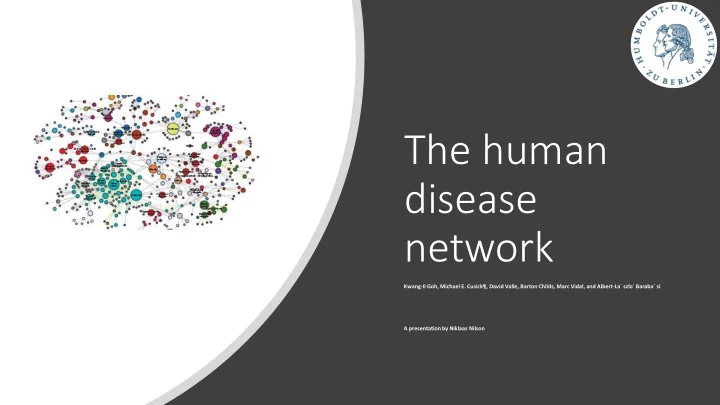

The human disease network Kwang-Il Goh, Michael E. Cusick¶, David Valle, Barton Childs, Marc Vidal, and Albert-La´ szlo´ Baraba´ si A presentation by Niklaas Nilson
Genetic mutation deafness
locus heterogeneity allelic heterogeneity different mutations same mutation same disorder different disorders
Human “disease phenotype” “ Diseasome ” Human “disease genome”
1284 disorders 22 disorder classes 1777 disease genes
The Potential of HDN and DGN
The Potential of HDN and DGN
Functional Clustering of HDN and DGN
Disease-associated genes identify distinct Functional Modules
Centrality and Periphery • In S. Cereviseae highly connected Proteins (“hubs”) are more likely encoded by essential genes • Does human disease genes also have the tendency to encode hubs?
Centrality and Periphery • First analysis say yes • Disease related proteins have a 32% larger number of interactions to other Proteins than nondisease Proteins • And high-degree-proteins are more likely encoded by genes associated with diseases than other proteins
Centrality and Periphery - Essential proteins show a tendency to be associated with “hubs” (c) - Question: is the correlation between “hubs” and disease genes driven by the fact that a small number ob these genes is essential?
Centrality and Periphery • Correlation between nonessential genes and “hubs” disappears
Conclusion • This network gives the opportunity to study all human diseases at once • It´s a very elegant way for data- analysis
Recommend
More recommend